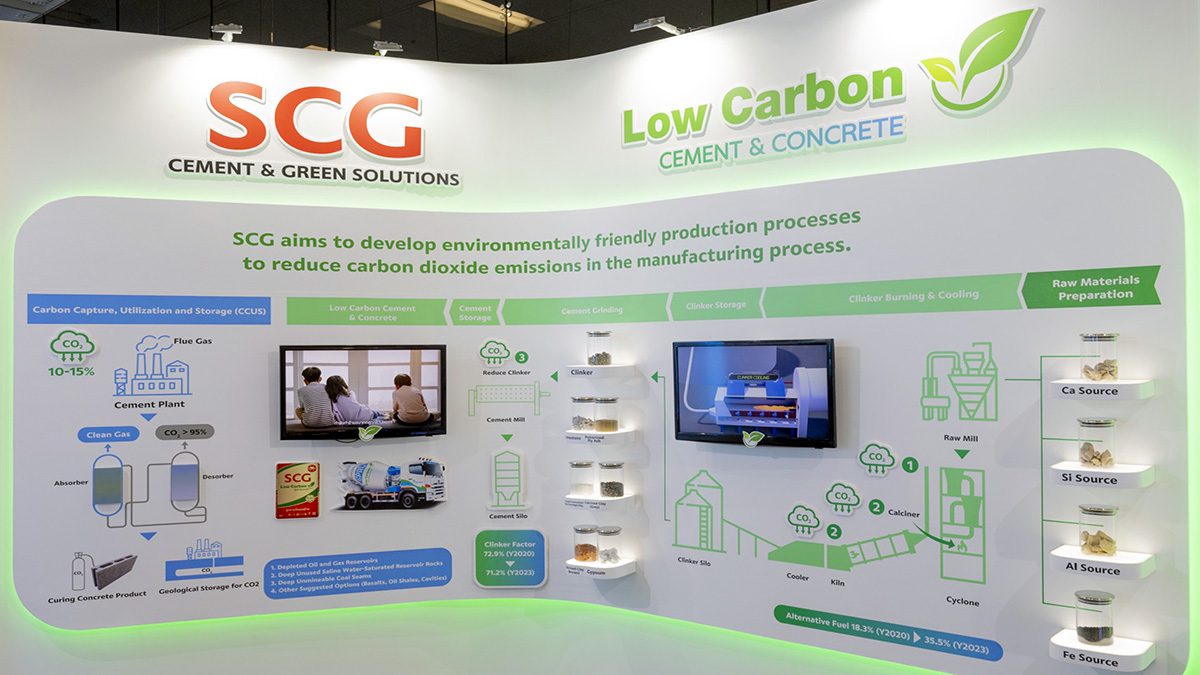As the world faces escalating environmental challenges, shifting from global warming to ‘global boiling,’ the creation of a low-carbon society has become an urgent priority. SCG, a leading conglomerate in ASEAN, is committed to spearheading innovations that make positive environmental changes possible, aiming to enhance living quality and ensure a better future for all.
In addressing the significant issue of plastic waste, with Thailand producing approximately 2 million tons annually, SCG Chemicals (SCGC) has developed groundbreaking solutions. The introduction of ‘SCGC GREEN POLYMER’ highlights SCGC’s comprehensive approach to eco-friendly polymer solutions, focusing on four key aspects: Reduce, Recyclable, Recycle, and Renewable. The Reduce initiative utilizes high-quality plastic pellets that are both stronger and lighter, reducing overall plastic consumption.
For the Recyclable domain, SCGC offers recyclable packaging solutions suitable for both food-grade and general uses. The Recycle aspect employs Mechanical and Advanced Recycling technologies to manufacture durable packaging from recycled materials. The Renewable initiative, in collaboration with Braskem under the ‘I’m green’ brand, focuses on bio-based plastics derived from sustainable plants. SCGC aims to produce 1 million tons of green polymer by 2030, potentially cutting Thailand’s plastic waste by up to 50% annually. The company is dedicated to partnering with various organizations to promote sustainable plastic usage, driving towards a greener future.
The rising energy prices have sparked a growing interest in clean energy solutions across all sectors, particularly solar power. SCG Cleanergy has responded by developing the ‘Smart Grid’ system, designed for facilities with high electricity consumption such as industrial estates, factories, shopping malls, hotels, and hospitals. Managed by experts, this system optimizes electricity usage by forecasting production and consumption, allowing facility owners to select the most cost-effective energy sources at different times.
The system is complemented by the Power & Carbon Trading Platform, which has demonstrated significant cost savings and CO2 reductions. A 6-megawatt solar system in industrial zones has been shown to reduce annual energy costs by 6% and lower CO2 emissions by 4,000 tons per year.
SCG has also partnered with Rondo Energy, a US-based clean energy startup, to develop the innovative ‘Heat Battery.’ This technology stores clean energy from wind and solar as heat, capable of reaching up to 1,500 degrees Celsius, and converts it into hot air and steam for industrial use without combustion, resulting in zero carbon emissions. SCG aims to deploy this technology across Thailand and other ASEAN countries.
SCG, Thailand’s first cement manufacturer with a history spanning over 111 years, is dedicated to leading the construction industry towards sustainability. SCG Cement and Green Solutions focuses on establishing a green value chain from pre to post construction. After more than 20 years of research and development, SCG introduced Thailand’s first ‘Low Carbon Cement,’ which reduces CO2 emissions during production while maintaining strength and durability.
This cement features finer materials that fill and reduce gaps in concrete more effectively, resulting in a smoother texture with better adhesion and compressive strength than conventional cement. Recently, SCG launched ‘Low Carbon Cement (Generation 2),’ which further reduces CO2 emissions by 15-20% in production. The company is also working on “Low Carbon Cement (Generation 3),” expected to cut CO2 emissions by up to 40%.
Additionally, SCG offers ‘CPAC Low Carbon Concrete,’ which reduces CO2 emissions equivalent to the planting of 2.5 trees per ton of concrete used. The internal startup ‘KITCARBON’ supports real estate developers by providing a platform to calculate embodied carbon in construction projects, aiding in the design of efficient construction processes and the selection of materials that minimize environmental impact.



